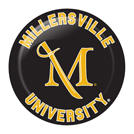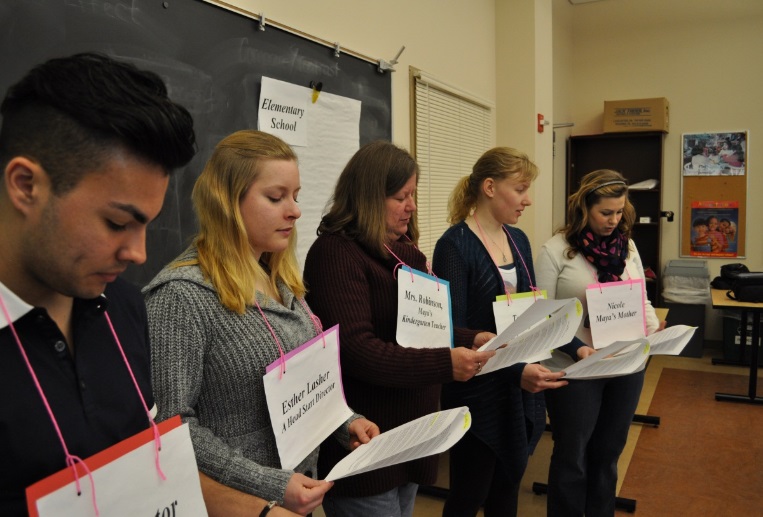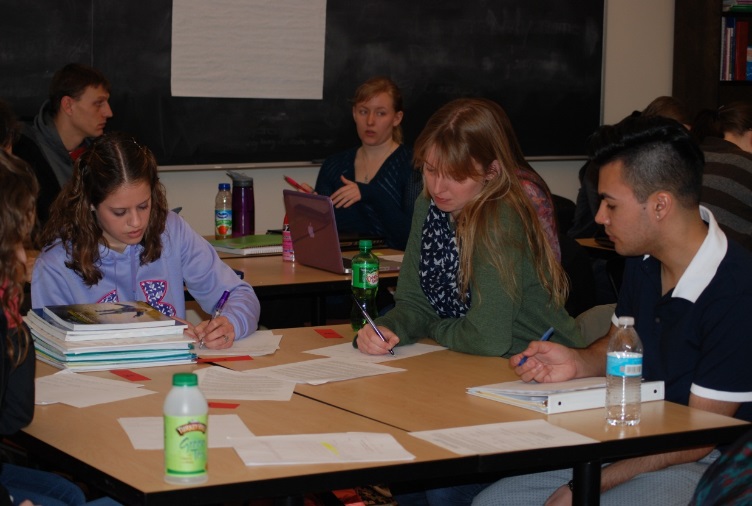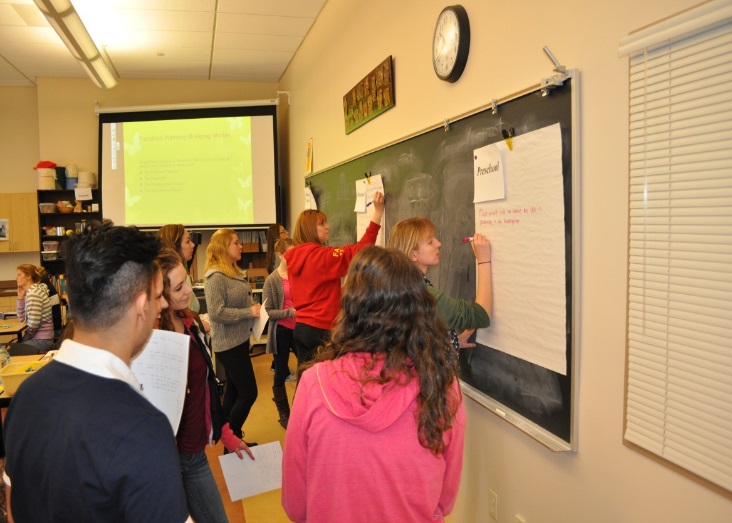The Harvard Family Research Project separated from the Harvard Graduate School of Education to become the Global Family Research Project as of January 1, 2017. It is no longer affiliated with Harvard University.

|
August 25, 2015 Transition as a Shared Responsibility: The Bridging Worlds Reader’s TheaterPérsida Himmele, Marcia Nell
|
FINE Newsletter, Volume VII, Issue 3
Issue Topic: Blended Professional Learning: Preparing and Supporting Educators to Engage Families
Voices From the Field
As teacher educators with the goal of helping students navigate the practical everyday issues that teachers face, we have found that the Harvard Family Research Project case studies offer valuable real-world perspectives embedded within authentic scenarios. While working with a classroom of preservice teacher candidates, we used the Bridging Worlds case study to help students better understand the importance of planning for an effective transition from preschool to kindergarten.
The Bridging Worlds case offered insights into the perspectives of five major stakeholders impacting the educational transition of a young child, Maya, from her preschool setting to the kindergarten classroom. Stakeholders included Maya; Maya’s mother; the preschool teacher; the kindergarten teacher; and the Head Start director. Our overall agenda was to have students process the importance of their own roles in supporting children and their families within the transition process. We approached the case study from the angle of a Reader’s Theater. Our objectives were as follows:
- Students will analyze key factors contributing to a difficult kindergarten transition using an HFRP case about a child named Maya, and
- Students will develop a preliminary plan for supporting children as they transition into kindergarten.
Preparation. Prior to coming to class, students read the case and recorded their “golden lines” and “furrowed brows.” A golden line referred to anything that stood out for them as a discussion-worthy point. The furrowed brows were aspects of the reading with which the student disagreed, or that prompted the student to question. At the beginning of class, we used their golden lines and furrowed brows as a springboard to facilitate small-group discussions about the case study.
The Reader’s Theater. For the sake of brevity, in the Reader’s Theater, we selected the most salient aspects of the case study. We created five hanging name labels that corresponded with the stakeholders represented in the case study, and we printed five copies of the abridged Reader’s Theater. Five volunteers were asked to perform the Reader’s Theater, while the rest of the class was asked to pay close attention to the issues that each stakeholder expressed during the performance.
The Action Plan. Once the Reader’s Theater was performed, students worked in randomly assigned groups to discuss the assumptions held by each of the stakeholders. The students were asked to analyze how these assumptions created barriers or opportunities for the child’s successful transition between preschool and kindergarten. Students were also asked to think of actions that were, or that could have been, taken by each of the stakeholders in order to support a successful transition to kindergarten. Students were asked to clearly define the ideal roles of each of the stakeholders in their action plan so that these roles would be apparent to their peers as they read their action plan statements. The students then transferred their action plans onto chart papers for each of the assigned stakeholders.
The Gallery Walk. Students circulated in a gallery walk by traveling to each of the chart papers, adding their insights, and noting what their peers had written. After the gallery walk, the students were asked to individually reflect on the kindergarten transition process and how it could be improved. Students shared their insights in small groups, and then they shared their reflections within a larger group discussion. A final open quick write allowed students to process their takeaways based on what they had experienced during the day’s lesson.
|
|
|
|
||
|
A Reader’s Theater is an exciting way to get students thinking about the multiple perspectives presented in a teaching case. |
|
After the Reader’s Theater, students have an opportunity to develop an action plan and reconsider their assumptions about the case. |
The gallery walk allows students to see what others are thinking about the case and respond to other students ideas. |
Student Reflections on Transition. In the final quick writes, students referred to the importance of communication and intentionality on the part of all of the stakeholders. For example, the following comments are from students’ final quick writes:
- “I think it is important [to me] as a future teacher to create a plan of action for any student who is making a difficult transition”;
- “It made me really think about how important the transition is between preschool and kindergarten”;
- “When it is assumed that one party has the responsibility of making contact, proper support of the child cannot be met”; and
- “The biggest idea that resonated throughout this activity was the importance of having open communication between educators, parents, and the child.”
Other quick writes focused on the stress that is caused to the child when the transition process is not a smooth one. For example:
- “I learned how challenging it can be for children and families to make the transition to kindergarten”;
- “It got me thinking about. . .ways I could help children in their transition to kindergarten”; and
- “The transition from preschool to kindergarten is a prerequisite to how a child will adjust to more challenging changes throughout life.”
Student Reflections on the Reader’s Theater. In addition to asking students to reflect on the content of the presentation, we also asked them to reflect on the usefulness of the Reader’s Theater and the subsequent activities. We provided students with open-ended surveys, and asked them to complete the surveys anonymously. Of the 31 students in the class, all unanimously indicated that the activities were worthwhile to their candidacy as a teacher.
A total of 31 students were asked to anonymously respond to the question, “What is your biggest takeaway today?”
- 11 students reflected on how the case study helped them with visualizing potential challenges related to children’s transitioning into kindergarten.
- Another 11 students reflected on how the activities made them “really think about what transition would look like.”
- 12 students emphasized the importance of the role of communication.
- 11 students commented on how the activities helped them understand the importance of everyone’s role in a smooth transition process.
When asked to identify what worked and what didn’t,
- 18 students indicated that the gallery walk was valuable in articulating each of the stakeholders’ roles in creating a smooth transition.
- 22 students identified the Reader’s Theater as a valuable tool in helping to summarize the main points of the case study.
- 2 students mentioned the need for more time in the small-group discussions.
- 1 student found the role-play too repetitive, since students had been asked to read the case study prior to coming to class, and 1 student wanted fewer worksheets and more walking.
- 1 student wanted us to give him or her the right answer. We found this to be humorous, since we would all love to have the right answer, but the realities of smooth transitions are often complex. We considered this to be one of the strengths of the case study, in that it provided us with a practical tool for examining these complexities.
Our Reflections
Overall, we found that the HFRP case study was a springboard for a valuable lesson that allowed students to examine the complexities behind the need for supporting families with successful transitions. Presenting the case study in the form of the Reader’s Theater allowed us to extend the story element that was presented in the case study and actually “put a face” on the issues, challenges, and concerns held by each of the stakeholders. Another benefit associated with using the case study was the opportunity for students to work collaboratively toward developing real-life solutions to very complex problems.
In retrospect, if we could re-do the lesson, we would add a focus on the role of the parent. We deliberately chose not to include a chart paper delineating the role of the parent. One of the assumptions that we held, as teacher educators, was that we wanted our students to take responsibility for whatever was within their control as future teachers. Parents’ roles and actions, after all, are not something that teachers can control. However, whether or not the teacher has control over how children are raised or supported when it comes to academic environments, it is in the teachers’ best interests to be able to identify and support home practices that contribute to successful kindergarten transitions. One student commented on the absence of the focus on parent responsibilities in the kindergarten transition, and while it might be true that we don’t want to foster an attitude of “passing the buck,” we do want to support teachers in being knowledgeable about ideal home circumstances and how to support parents in providing academically supportive home settings.
Read the rest of the faculty reflections.
About Pérsida Himmele and Marcia Nell:

Pérsida Himmele, associate professor, Millersville University, Elementary and Early Childhood Education Department

Marcia Nell, associate professor, Millersville University, Elementary and Early Childhood Education Department
This resource is part of the August FINE Newsletter. The FINE Newsletter shares the newest and best family engagement research and resources from Harvard Family Research Project and other field leaders. To access the archives of past issues, please visit www.hfrp.org/FINENewsletter.



